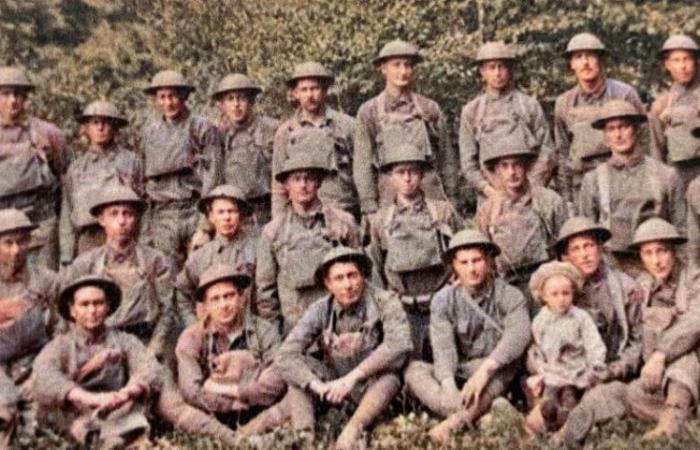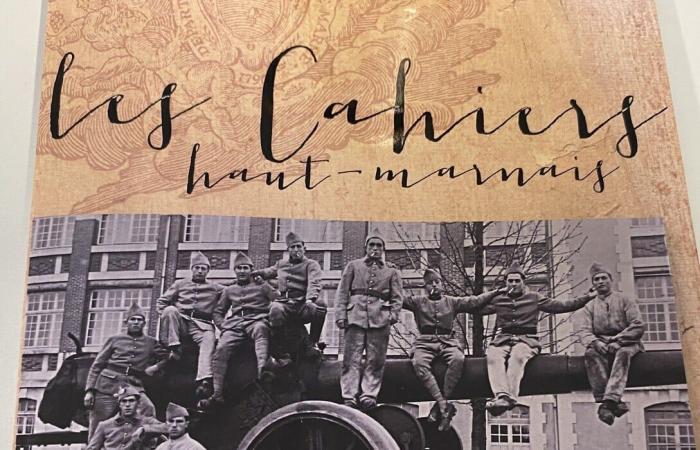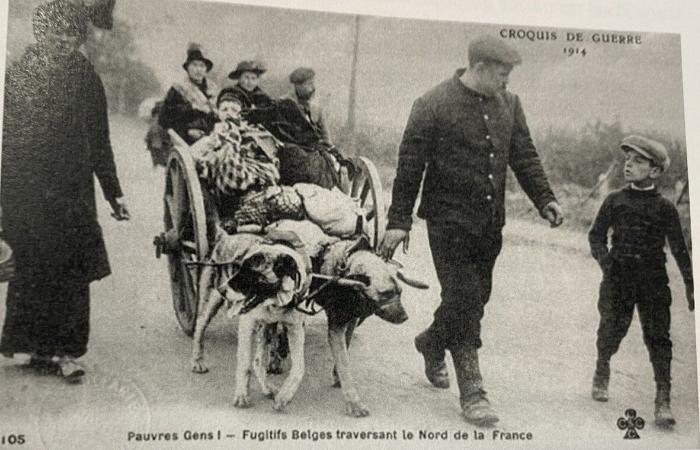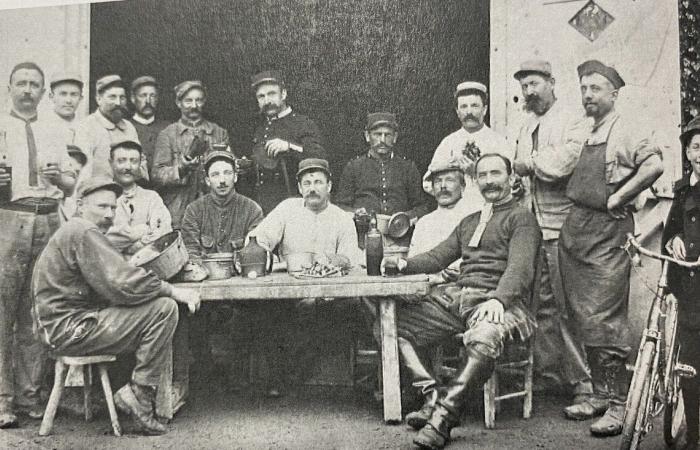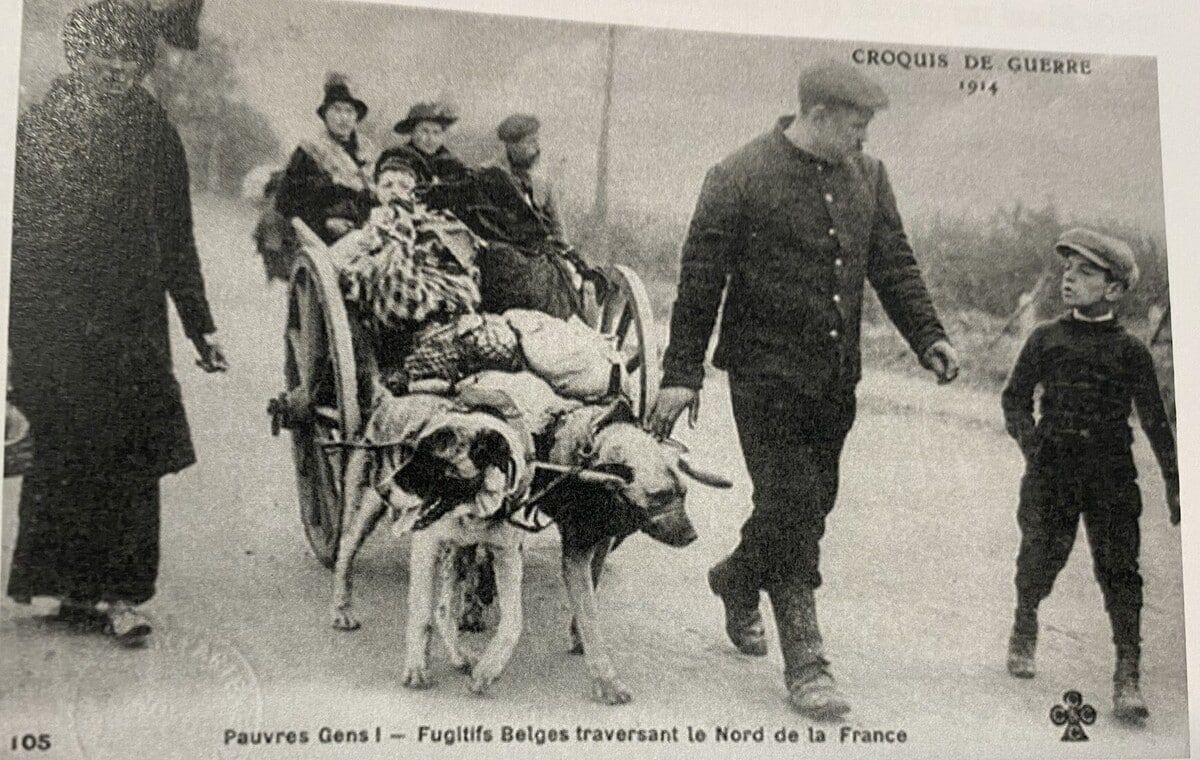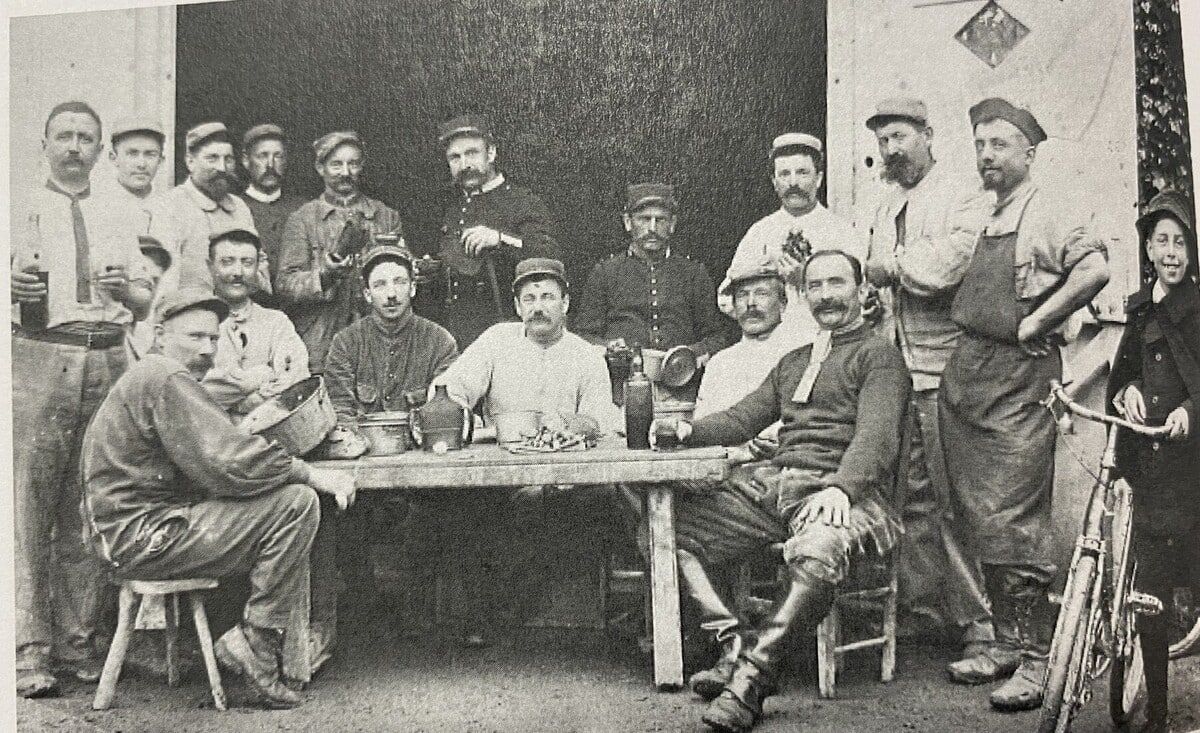The latest issue of the famous Cahiers Haut-Marnais is committed, in November 2024, to shedding light on the role and daily life of the department, which became a base camp during the Great War, or even an obligatory passage during the Second World War.
“While many of our fellow citizens struggle to imagine the war at the gates of Europe, the Haut-Marnais commemorate the anniversaries of the Liberation and several memorials to the dead of the Great War. » It is with this preamble that Charles Guené, honorary senator of Haute-Marne and president of Cahiers, presents opus n°312 of Cahiers Haut-Marnais.
Four authors for four themes. The first, developed by Bernard Plond, is devoted to refugees in Haute-Marne during the Great War, and was motivated by comments made by Alain Morgat in 2017, then director of the Departmental Archives: “It is possible to better understand the contours of the reception of refugees in Haute-Marne during the Great War thanks to their individual files which fill around fifteen archive boxes, grouped in sub-series 10 R.”
Bernard Plond and his colleagues therefore took up this suggestion, and a total of 17 boxes of archives will be sifted. The administrative districts concerned are those of Chaumont, Joinville, Langres, Saint-Dizier and Wassy. The field of study is therefore broad in the department and concerns a large number of municipalities, even if some have left no vestiges, either because they did not have the opportunity to welcome refugees, or because that the files have been misplaced. And it is an important and fascinating study which is included in these Cahiers Haut-Marnais n°312 since, as Alain Morgat added at the time: “Refugees have long been forgotten by the Great War”.
Teachers, local memories
The work transcribed by Bernard Plond relates the profiles of refugees in the department, and their social and budgetary treatment in our communes. The local study intends to be compared to that carried out by historians covering the whole of France.
To do this, the author and his team analyzed the notes taken by the teachers of Haute-Marne. Out of 244 municipalities identified for which these notes exist, only 67 include mentions about refugees, including the testimony of the teacher from Wassy-Pont-Varin who “by his objectivity, borders on the realism of Victor Hugo or Emile Zola , by its exhaustiveness, its stylistic qualities, it represents the “ne plus ultra” of the stories relating to the reception conditions and the state of mind that the Haut-Marnais knew how to reserve for the “exiles”, their unfortunate contemporaries », underlines Bernard Plond.
Make way for Alain Laurent, who reveals in this edition of Cahiers the second part of an investigation carried out within the commune of Puellemontier, whose parish bulletins proved almost silent during the Great War. The impact of the war on village life was, however, revealed thanks to the discovery of beautiful iconographic documents from a private collection. These funds, illustrated, testify to a strong military presence in the village, and to an opportune activity which had de facto developed in Puellemontier: the multiplication of drinking establishments… We also discover the existence of a strong activity relating to the care provided to sick or injured horses during fights. Alain Laurent takes care to recall those who died for France in the commune, 18 men in total, and returns to a reality of which Exbrayat will make a novel, under the title “Jules Martrat”: the difficult role of mayors in the announcement deaths to families.
Americans and German police
Another leap in time proposed this time by Adriance Bourg, who shares the fascinating writings of Marcel Favard, native and resident of Forcey, a town located about twenty kilometers from Chaumont. Marcel Favard, born in 1902, “decided to write his memoirs, telling specific anecdotes, ranging from his childhood in the First World War to the start of the Second and his return home after his mobilization”, details the author.
In 1917, when the United States entered the war alongside the Allies, its army positioned itself in various fixed points in the rear, including Haute-Marne, in the immediate vicinity of the Lorraine and Champagne fronts. Chaumont, for example, is home to the headquarters of the commander in chief of the American Expeditionary Force, General Pershing.
In December of the same year, Forcey was chosen to host a first contingent of the 331st American Infantry Regiment, which stayed only a month. From July to October 1918, a contingent of the 364th took place. The village then organized itself, each house having to accommodate soldiers according to the space available. “Four large barracks were built initially, followed by others. According to the compensation statements in the commune archives, approximately 1,070 officers and 27,500 soldiers served one after the other between December 1917 and January 1919 in the village of Forcey. » Adriance Bourg's story, embellished with Marcel Favard's anecdotes, returns as if we were there to this extraordinary cohabitation: “These gentlemen were very fond of the good Mirabelle plum tart, but especially of the plum brandy that every household could distill in those days.”
Lionel Fontaine transports us post-disembarkation in Normandy. Less than two months later, the Americans entered Brittany. The German units present retreated towards the east, as did the occupier's repression services established in the region.
“At the crossroads of the Paris-Epinal and Reims-Dijon axes, the town of Chaumont became a temporary stopover in this withdrawal towards Lorraine and Alsace. The city thus saw the establishment of the personnel of an organization that remained famous in the collective memory under the name of “Gestapo”. In reality, it was the Sicherheitspolizei und Sicherheitsdienst (Sipo-SD), i.e. the security police and the security service. The formidable service which took up residence in Haute-Marne came precisely from Brittany, as did the formations of French auxiliaries who came to join it there,” writes Lionel Fontaine.
In his story, we discover the different groups that stayed in Chaumont between August 15 and 27, 1944, what their misdeeds were on the department, but also the Haut-Marnais who followed them in their flight to Germany and their fate facing justice at the Liberation. In particular a certain Pierre Claudé, considered the “traitor number 1” of Haute-Marne, fascinated by Hitler, a portrait of whom he had on his desk…
Elise Sylvester
Les Cahiers Haut-Marnais, edition 312, “Haute-Marne, from one war to another”. For sale. [email protected]

